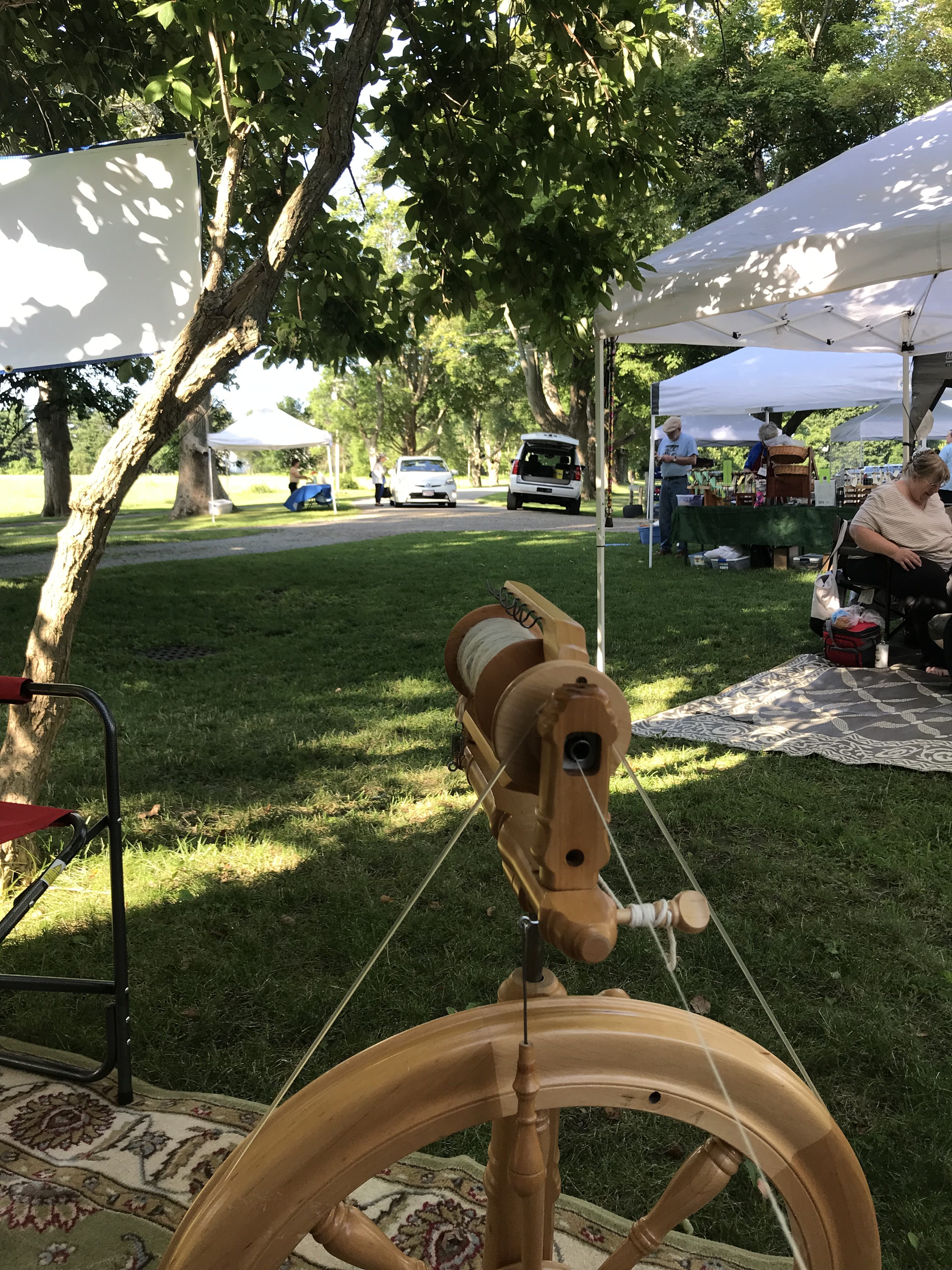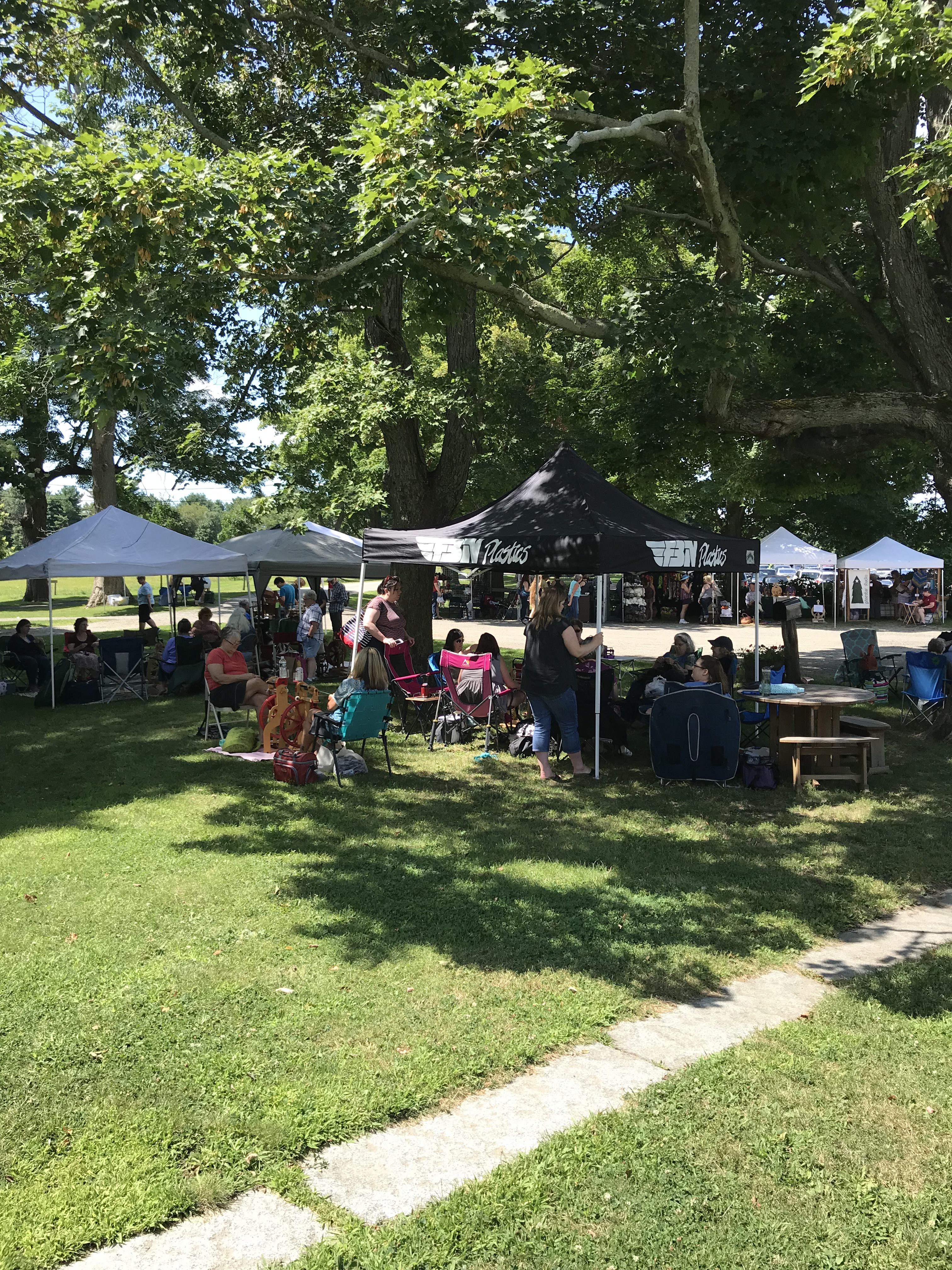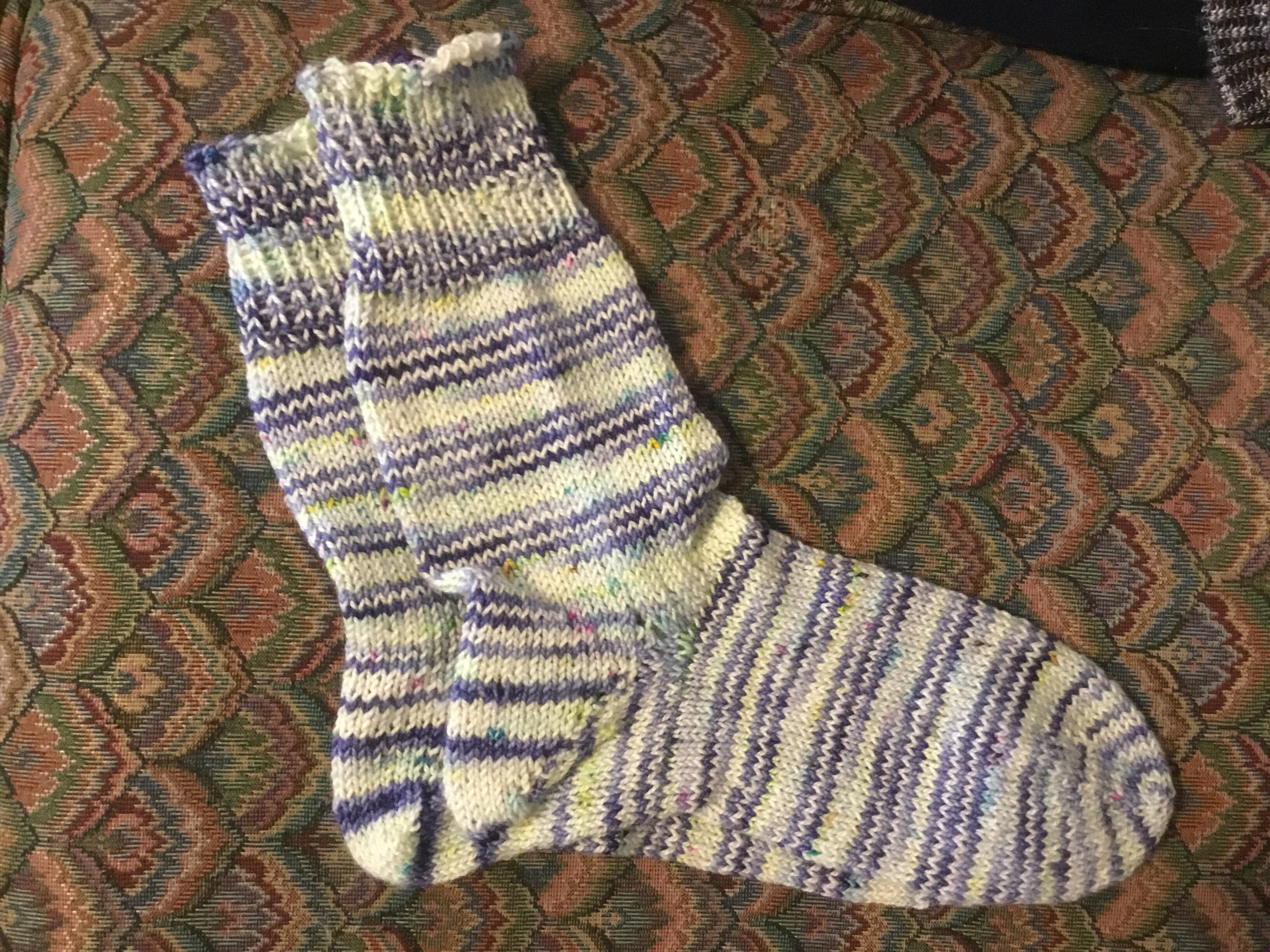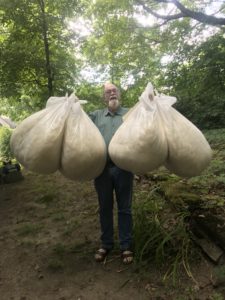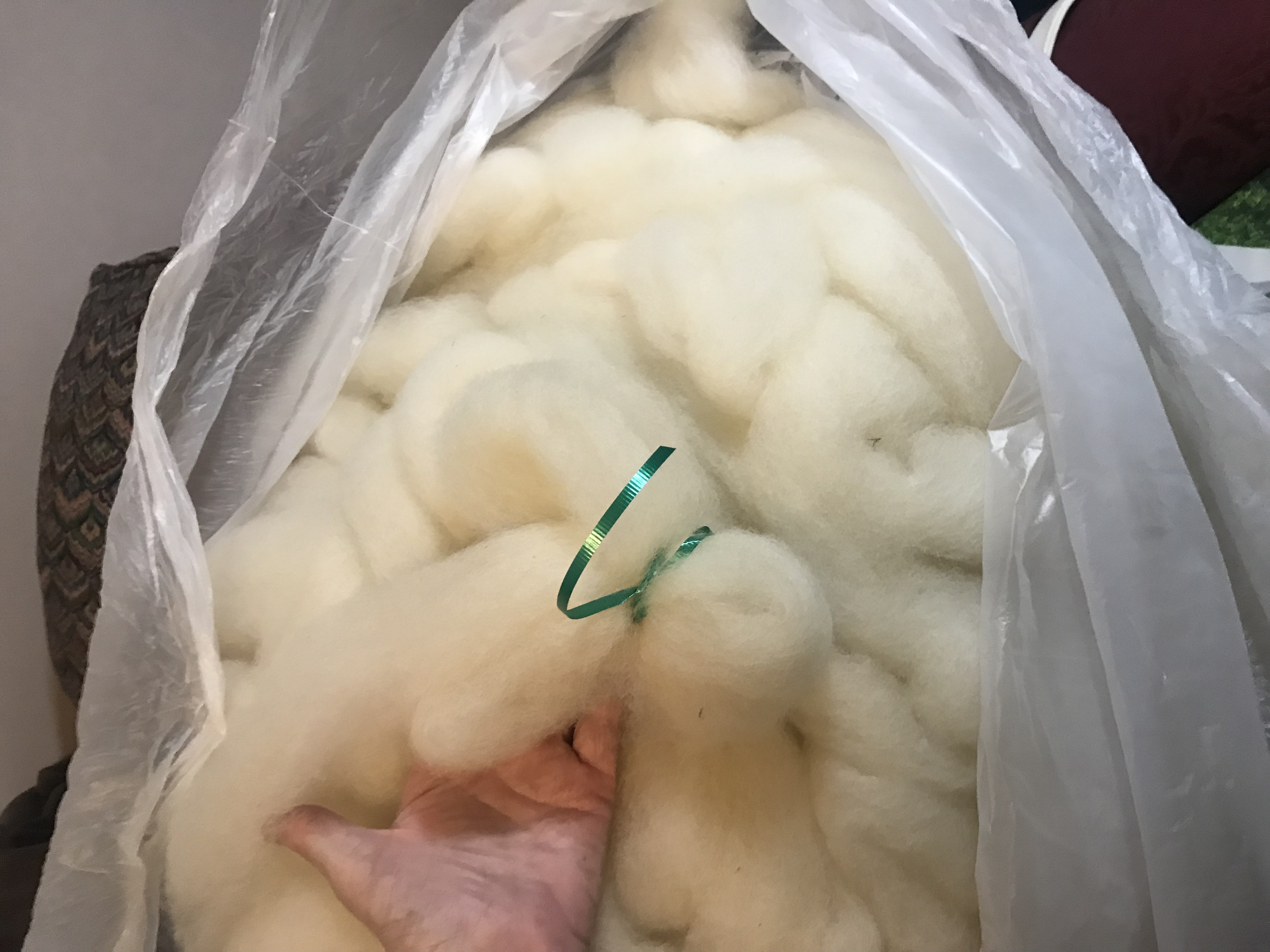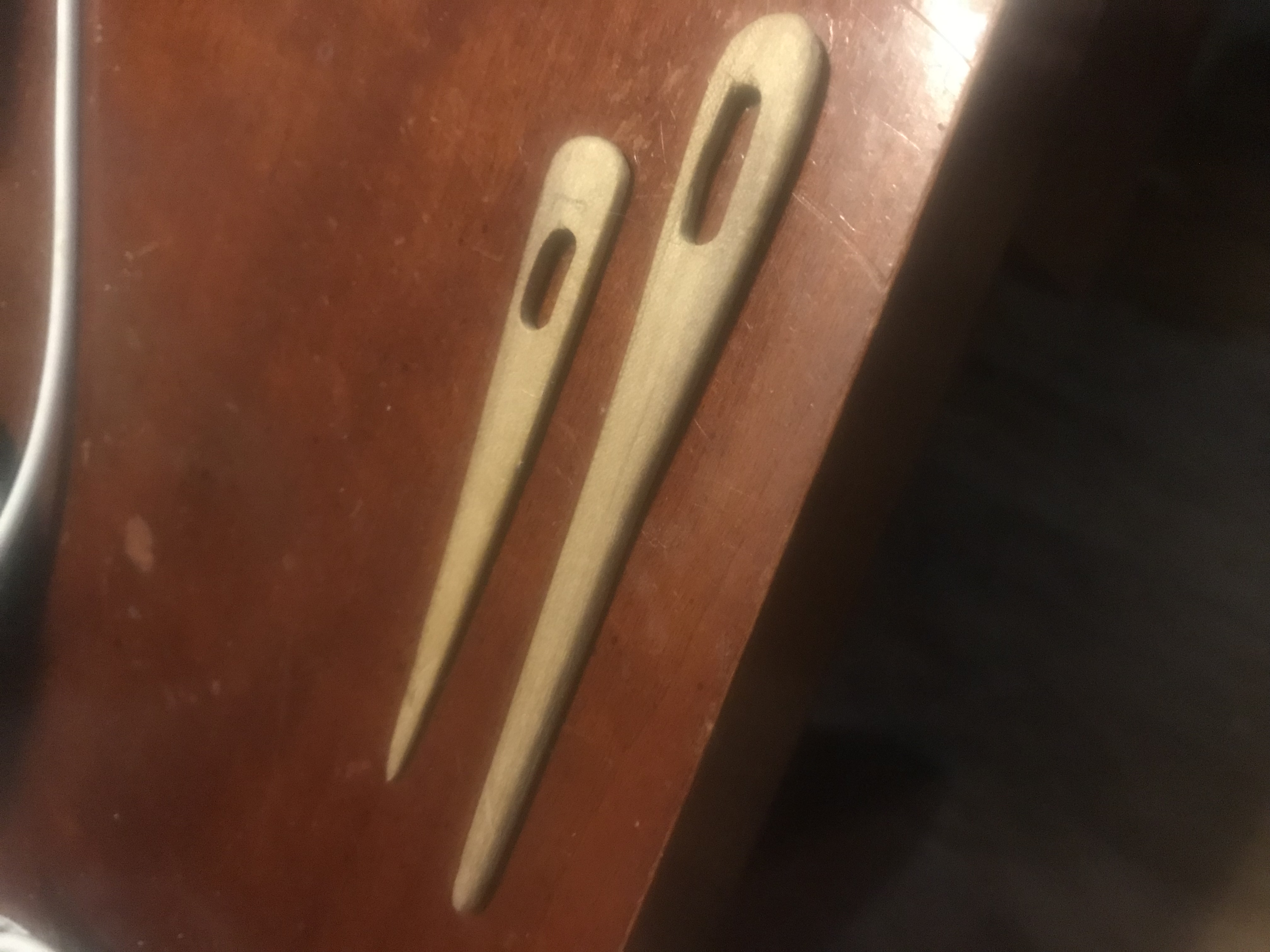Really Slow Cloth
I have been spinning for six or seven years, I guess, using what many would recognize as a spinning wheel. Many years ago I failed horribly spinning on a spindle, but I’ve seen several friends in the community making yarn the really slow way (the Vikings used spindles to make yarn for ALL their cloth – even the sails of their ships). I thought I’d give this a try. 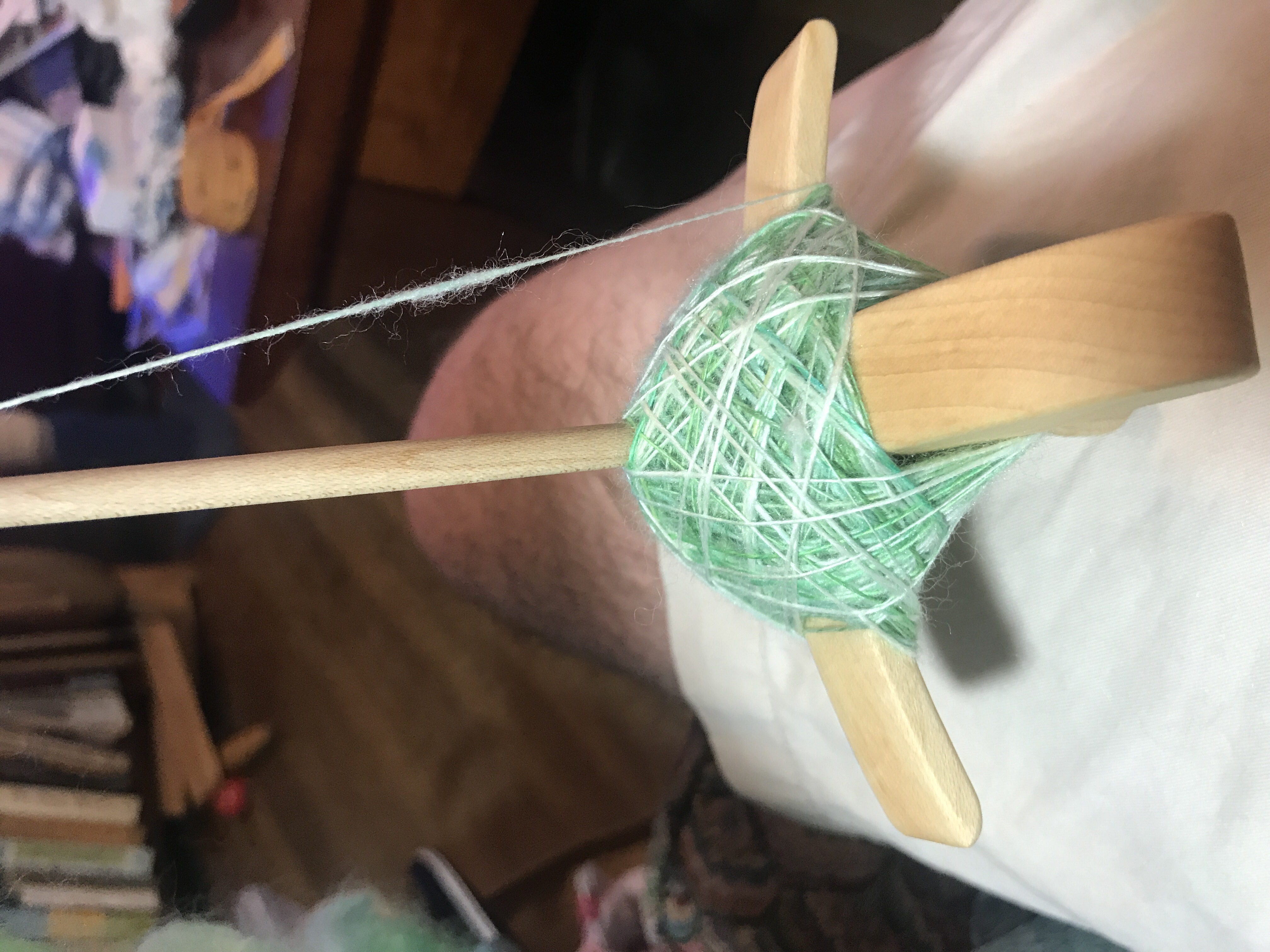
Well, this picture is of my second spindle, a so-called Turkish spindle. I snap the spindle shaft between my thumb and ring finger, and gradually pull fiber out and let the turning spindle twist it into yarn. After I get about a meter of yarn spun, I stop and wind it onto the cross arms.
The Turkish spindle differs in that it has crossed arms rather than a disc, like most (like my other spindle). When the yarn is wound in a particular pattern (over two, under one), a ball of yarn that pays out from the center is created. I’m having fun but it’s really slow to make yarn this way.
I get a lot of funny looks when I do this in public, but explain what I’m doing and how I do it. I also explain that I spin because knitting isn’t weird enough, and tend to win them over, but I’m amazed at the number of people who have no concept of where cloth comes from.
